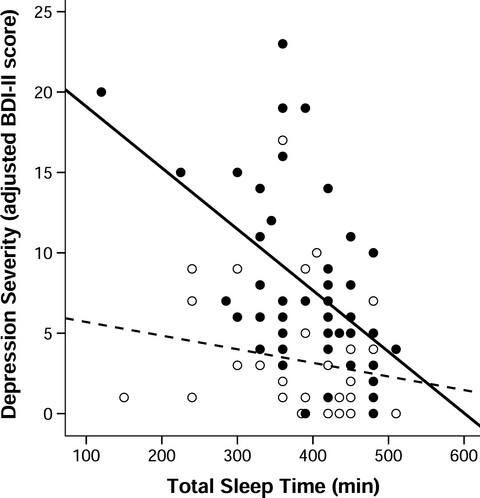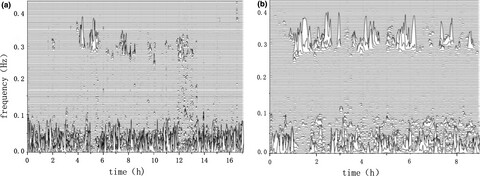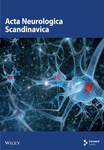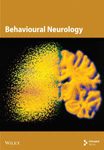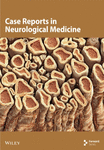Journal list menu
Export Citations
Download PDFs
Table of Contents
Disrupted functional brain network organization in patients with obstructive sleep apnea
- First Published: 01 February 2016
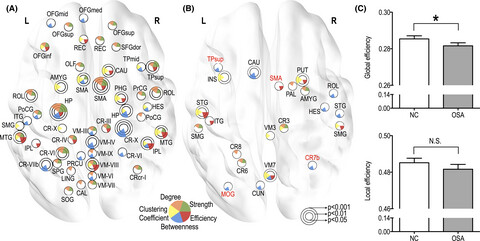
This study is aimed to examine resting functional interactions and the complex network organization of these interactions across the whole brain in 69 obstructive sleep apnea (OSA) subjects, relative to 82 control subjects. OSA subjects showed significantly altered functional connectivity in various brain regions regulating autonomic, affective, executive, sensorimotor, and cognitive functions and entire functional brain network in OSA emerged significantly less efficient integration. Previous studies in OSA showed altered functional responses to evoked autonomic, motor, or ventilatory challenges; the findings here suggest that the dysfunction extends to resting conditions, and the altered connectivity and impaired network organization may underlie the impaired responses in cognitive, autonomic, and sensorimotor functions.
Sleep disturbances and depression severity in patients with Parkinson's disease
- First Published: 23 April 2018
Altered resting-state hippocampal and caudate functional networks in patients with obstructive sleep apnea
- First Published: 10 May 2018
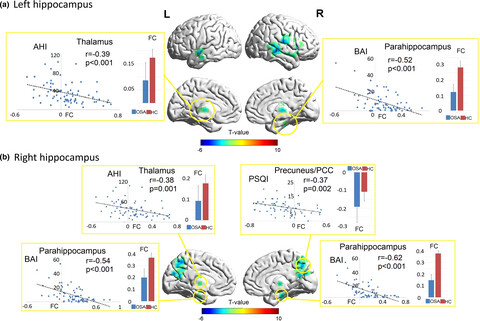
In obstructive sleep apnea (OSA) subjects, the hippocampus showed disrupted functional connectivity (FC) with the thalamus, para-hippocampal gyrus, medial and superior temporal gyrus, insula, and posterior cingulate cortex. Left and right caudate nuclei showed impaired FC with the bilateral inferior frontal gyrus and right angular gyrus. These altered limbic-striatal-cortical FC in OSA showed linear relationships with sleep and neuropsychological variables.
Disruption of sleep architecture in Prevotella enterotype of patients with obstructive sleep apnea-hypopnea syndrome
- First Published: 08 April 2019
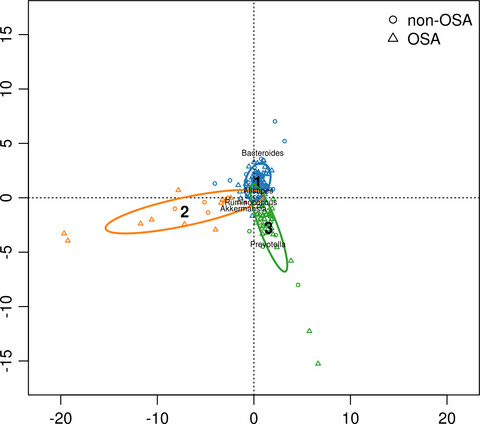
-
Intermittent hypoxia (IH) and sleep fragmentation (SF) are hallmarks of the predominant mechanism underlying obstructive sleep apnea-hypopnea syndrome (OSAHS). Moreover, IH and SF of pathophysiological roles in the gut microbiota dysbiosis in OSAHS have been demonstrated. We hypothesized that microbiota disruption influences the pathophysiological processes of OSAHS through a microbiota–gut–brain axis. We observed that apnea indices and other parameters of disturbances during sleep were significantly elevated in apnea-hypopnea index (AHI) ≥15 patients with Prevotella enterotype. This enterotype prone to endotoxin production, driving systemic inflammation, ultimately contributes to OSAHS-linked comorbidities. Accompany, increasing the arousal indices leads to systemic inflammatory changes and higher blood pressure also seen in patients with Prevotella enterotype. We highlight that the possibility that the microbiota–gut–brain axis operates a bidirectional effect on the development of OSAHS pathology.
Sleep duration and resting fMRI functional connectivity: examination of short sleepers with and without perceived daytime dysfunction
- First Published: 15 September 2016
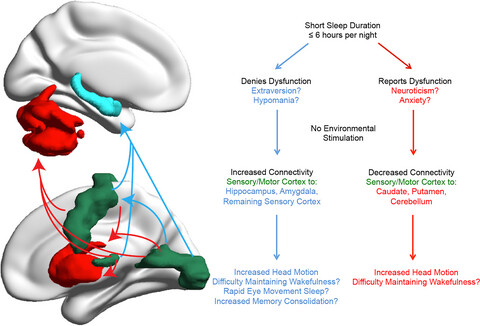
Using the Human Connectome Project dataset, self-reported habitual short sleep duration (<6 hr/night) is shown to be one of the most informative behavioral characteristics underlying resting brain functional connectivity. Characteristic and reproducible findings differ with reported daytime dysfunction, and suggest that individuals who sleep less than six hours a night, even among those who deny daytime sleepiness, may be dependent on environmental stimulation to sustain wakefulness.
Poor sleep quality in patients with multiple sclerosis: gender differences
- First Published: 20 September 2016
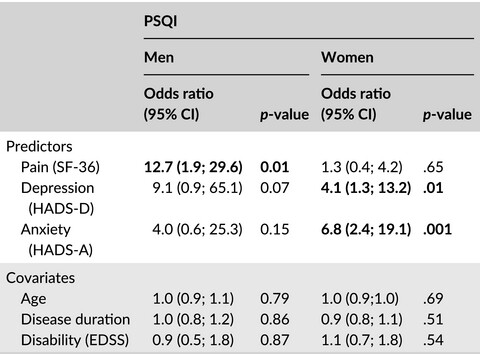
Our study explored possible gender differences in factors related to poor sleep quality in patients with MS multiple sclerosis. We found that depression and anxiety contributed to poor sleep quality in women, but pain did so in men. Our findings highlight the need to apply gender-specific approaches to the treatment of sleep disorders.
Pre-screening of sleep-disordered breathing after stroke: A systematic review
- First Published: 29 October 2018
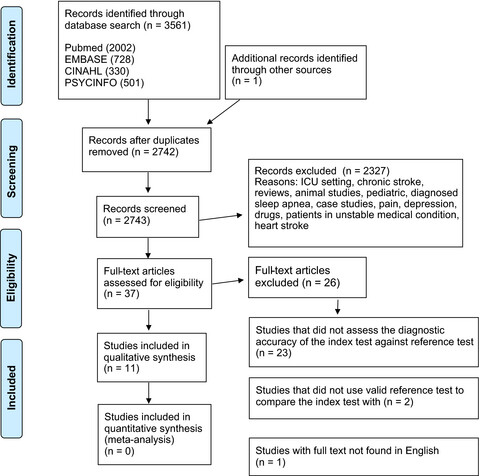
We performed a systematic review to study if reliable and plausible pre-screening methods for SDB after stroke exist for optimal targeting of diagnostic tests and, thus, better treatment and prevention of re-events. To our knowledge, this is the first systematic review on SDB pre-screening methods in acute and subacute stroke patients.
Sleep deprivation alters task-related changes in functional connectivity of the frontal cortex: A near-infrared spectroscopy study
- First Published: 22 June 2021
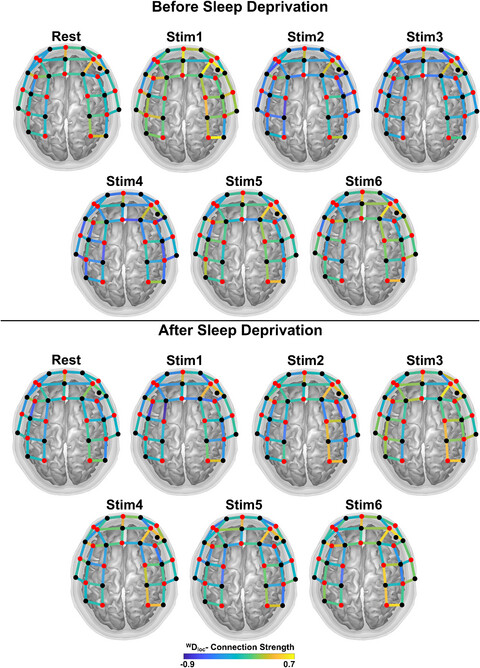
To assess the impact of sleep deprivation on static functional connectivity in the frontal lobe, functional near-infrared spectroscopy and graph theoretical analysis were utilized before and after 24 hr sleep deprivation in healthy young male participants. Deprivation of sleep resulted in a significantly smaller task-related decrease in the number of functional connections that correlated with decreased performance in the paired association learning test. These results indicate the global impact of sleep deprivation on functional brain networks in the frontal lobes.
Impact of sleep quality on post-stroke anxiety in stroke patients
- First Published: 03 November 2020

We found that the incidence rate of poor sleep quality is significantly higher in PSA patients than in non-PSA patients. Poor sleep quality before stroke is independently associated with the development of PSA, even after adjustment for several conventional confounders. These findings suggested poor sleep quality before stroke could provide important predictive information for anxiety after acute ischemic stroke.
Sleep disturbances in Taiwanese patients with Parkinson's disease
- First Published: 21 September 2017
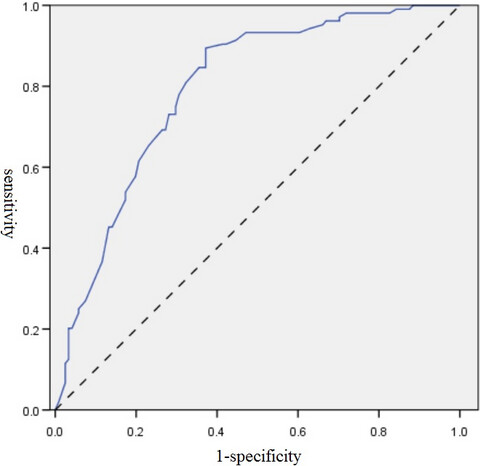
We conducted the study to describe the characteristics of sleep problems in a sample of Taiwanese PD patients and delineate the difference with reported sleep disturbances in Caucasian PD patients from the literature. We found that Taiwanese patients with PD had a lower prevalence of EDS compared with Caucasian patients. We identify and suggest that PDSS total score, rather than subcategory items, should be used to predict poor sleep among patients with PD.
Selective microstructural integrity impairments of the anterior corpus callosum are associated with cognitive deficits in obstructive sleep apnea
- First Published: 20 November 2019
Nonrapid eye movement sleep and risk for autism spectrum disorder in early development: A topographical electroencephalogram pilot study
- First Published: 09 February 2020
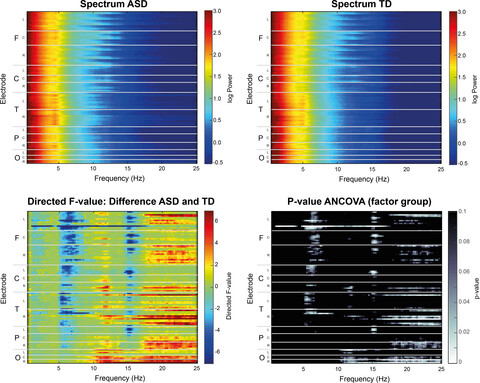
Early diagnosis of autism spectrum disorder (ASD) is challenging as such; there is a growing interest in detecting early brain markers of ASD. Here, we examine the EEG of nonrapid eye movement (NREM) sleep in the transition from infancy to toddlerhood. We found topographically distinct decreased fast theta oscillations (5–7.25 Hz), decreased fast sigma (15–16 Hz), and increased beta oscillations (20–25 Hz) in ASD.
Stress, coping, resilience, and sleep during the COVID-19 pandemic: A representative survey study of US adults
- First Published: 17 October 2021
Our study examined how gender, stress, coping, and resilience were associated with sleep during the COVID-19 pandemic in a representative sample of US adults. We found that women experienced worse sleep quality compared to men. Interestingly, pandemic-related stress was not significantly associated with sleep quality, but pandemic-related coping associated with sleep independent of robust controls and trait resilience. Specifically, greater primary control engagement was associated with better sleep quality, while involuntary engagement coping was associated with poor sleep quality.
Activation of brain-derived neurotrophic factor signaling in the basal forebrain reverses acute sleep deprivation-induced fear memory impairments
- First Published: 10 March 2020
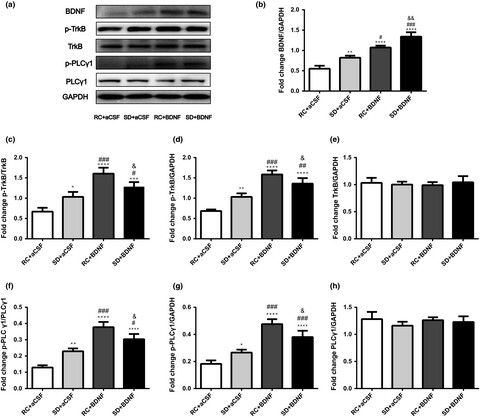
We found that acute sleep deprivation could increase BDNF protein expression and downstream TrkB/PLCγ1 activation robustly in the basal forebrain area. Microinjection of BDNF into basal forebrain could further activate TrkB/PLCγ1 signaling and reverse the decline in fear memory consolidation. Moreover, microinjection of TrkB receptor antagonist ANA-12 could aggravate sleep deprivation-induced memory impairments.
Effect of add-on melatonin on seizure outcomes and quality of sleep in epilepsy with idiopathic generalized tonic-clonic seizures alone in adult patients: Cross-sectional, randomized, double-blind, placebo-controlled clinical trial
- First Published: 01 January 2023

Recent data disclose that melatonin prevents seizures in animal models and could be effective and safe for decreasing epileptic manifestations in humans. This study indicated that the addition of melatonin to a routine antiepileptic regimen was effective in reducing the severity of epilepsy; it seems that melatonin can be used as an adjunct therapy for idiopathic generalized tonic-clonic epilepsy in well-defined circumstances.
Cross-cultural prevalence of sleep quality and psychological distress in healthcare workers during COVID-19 pandemic
- First Published: 17 October 2021
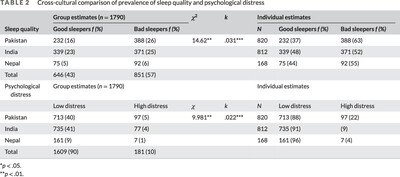
The present study highlights that a significant proportion of healthcare workers are affected by poor sleep quality and psychological distress during the COVID-19 pandemic. It also emphasizes the imperative to provide them with psychosocial support to avoid potential short- and long-term psychological consequences of these troubling times.
Functional connectivity in default mode network correlates with severity of hypoxemia in obstructive sleep apnea
- First Published: 01 November 2020
Impulse control disorders in Parkinson's: Sleep disorders and nondopaminergic associations
- First Published: 10 February 2018
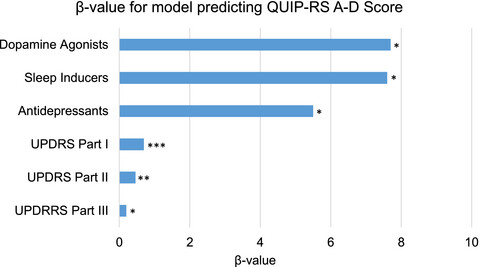
This study examines the association between impulse control disorders (ICDs) and nondopaminergic medications and sleep disorders in patients with Parkinson's disease (PD). Our results suggest that nondopaminergic drugs commonly used for PD may be associated with ICDs. We did not identify a relationship between ICDs and polysomnography-confirmed sleep disorders in patients with PD.
Altered long- and short-range functional connectivity density associated with poor sleep quality in patients with chronic insomnia disorder: A resting-state fMRI study
- First Published: 16 September 2020
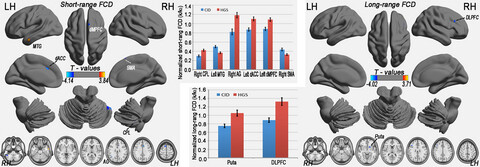
Using graph theory assessment and functional connectivity density (FCD) methods to investigate the insomnia-related alterations to the intrinsic connectome in patients with CID patients, we found that insufficient sleep during chronic insomnia widely affects cortical functional activities, including disrupted FCD and increased short-range FCD, which is associated with poor sleep quality.
Assessment of sleep quality using cardiopulmonary coupling analysis in patients with Parkinson's disease
- First Published: 14 April 2018




